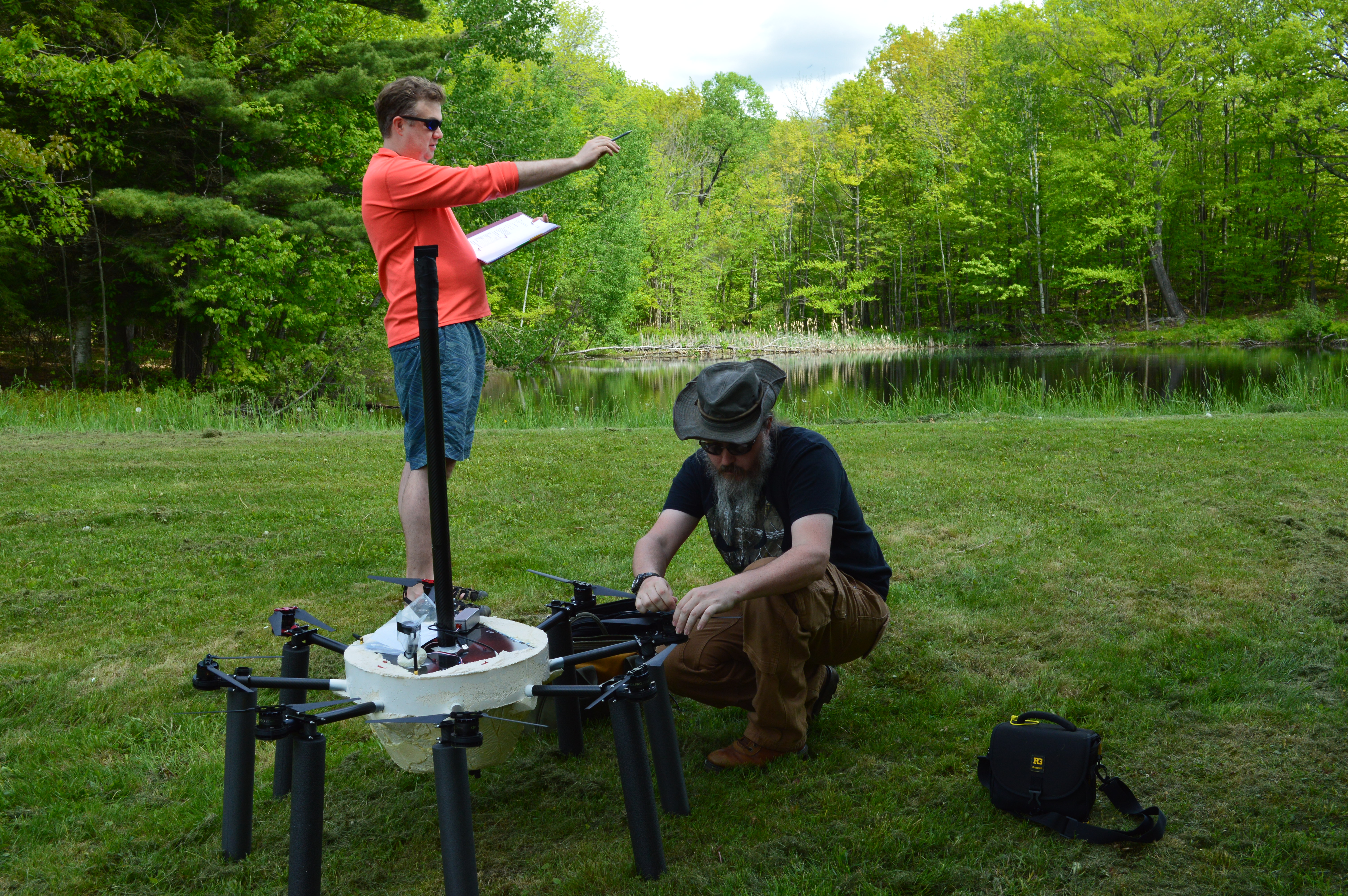Unattended Aerial Sensor Platforms
Imagine flying a lightweight low-cost drone. Challenging but doable. Now imagine doing that in the turbulent air-wake of a ship to measure atmospheric parameters. Harder. How about unattended? The Navy relies upon pressure, temperature, and humidity data to model electromagnetic propagation through the atmosphere, which dramatically improves accuracy of ship-based radar systems. NOAA (National Oceanographic and Atmospheric Administration) and the NWS (National Weather Service) utilize similar data for short- and long-term weather forecasting and climate modeling. Existing unmanned platforms that could do the job are often too expensive. Creare has been actively developing several multi-rotor and fixed-wing unmanned aerial systems (UAS) to address the needs of the atmospheric-sensing community including the Navy and NOAA.

Preparing for a flight test.
Creare’s UAS portfolio covers both platforms and sensor packages. We use long endurance fixed-wing platforms for access to remote locations (such as the Arctic) and rotorcraft for shipboard launch and recovery. One of our multi-rotor platforms is designed to record vertical atmospheric profiles similar to balloon sonde systems but with the added benefits of significantly lower cost, long-term unattended operation, and the ability to capture many profiles per day.
Creare’s improved UAS technologies will improve data collection and modeling accuracy for the atmospheric observation community at large. These improved models will lead to more streamlined operations for DoD (Department of Defense) needs and better insights into small-scale and large-scale atmospheric processes and phenomena that impact the world.
Benjamin Cameron received his B.S. and Ph.D. in Mechanical and Aerospace Engineering from the University of Virginia. His work at Creare spans a wide range of disciplines including thermal systems, structural systems, aerodynamics, hydrodynamics, sensors, power electronics, and energy systems. Some of Dr. Cameron’s other projects at Creare have focused on design of technologies for the Navy’s SSC (Ship-to-Shore Connector), EFV (Expeditionary Fighting Vehicle), and ACV (Amphibious Combat Vehicle) programs and development of novel motorcycle helmet technologies for the Department of Transportation.
This story was featured in the Fall 2017 edition of Creare’s People & Technology newsletter.
